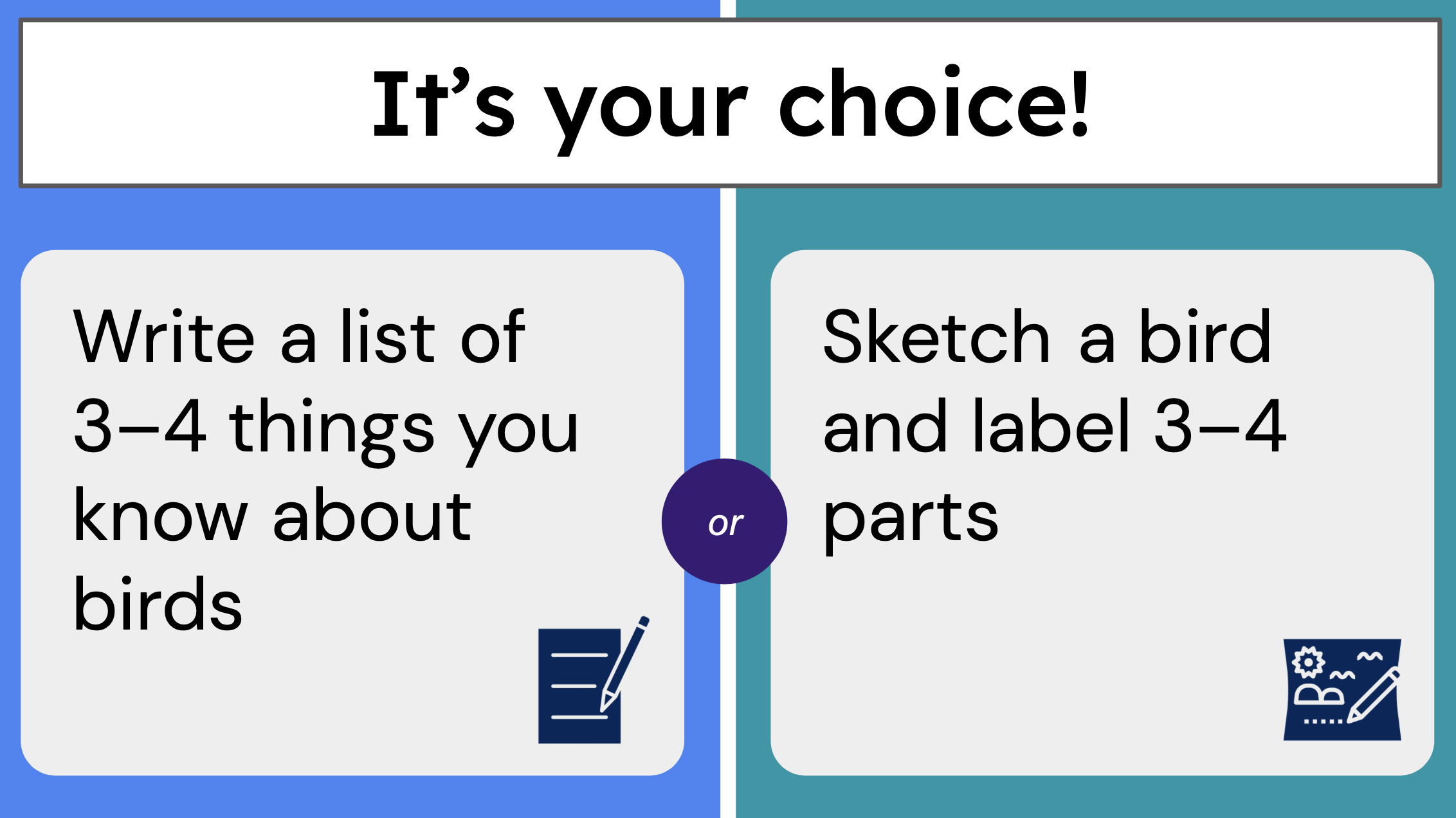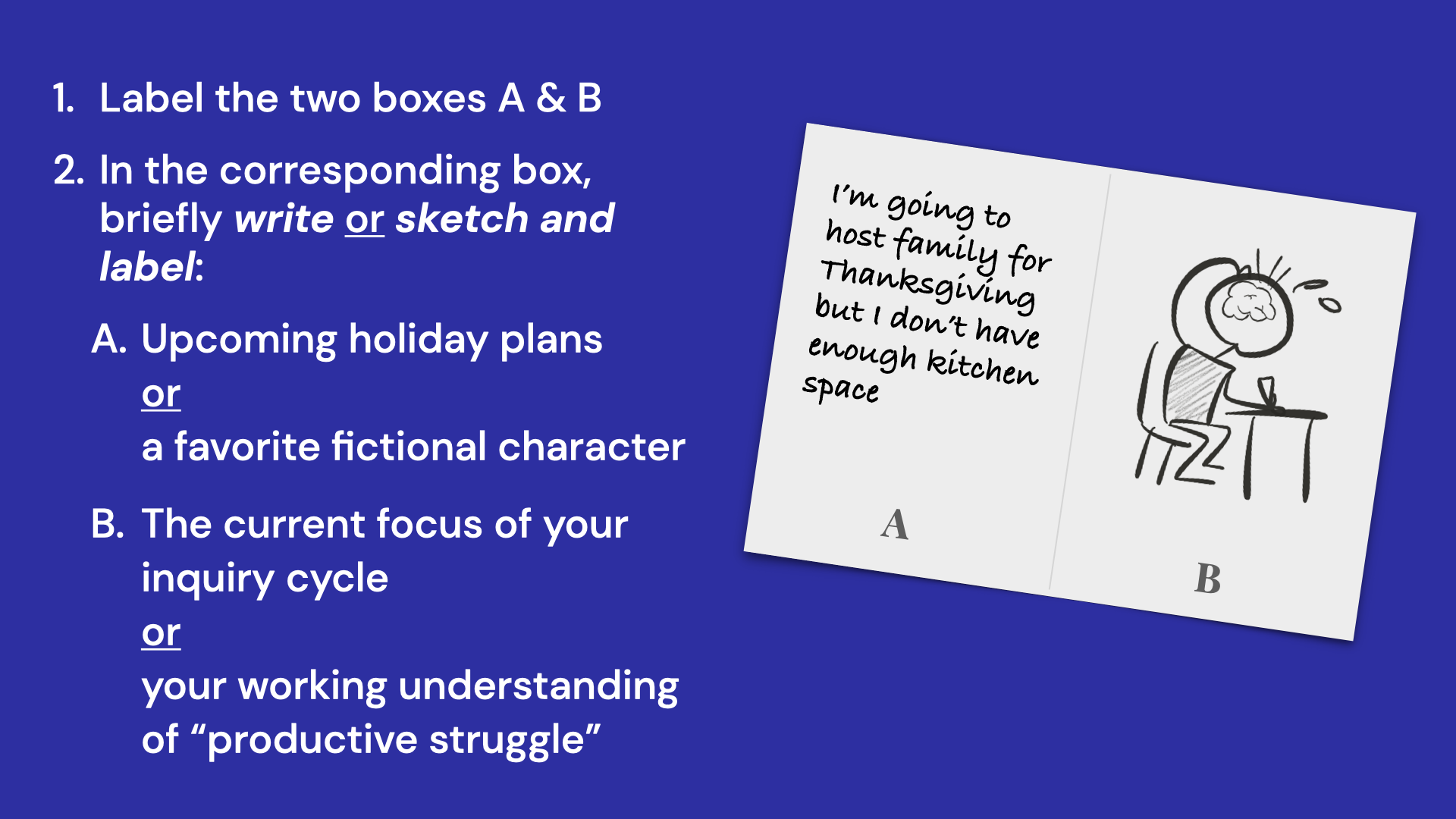“Fries or Salad?”: Six Simple Ways to Offer Students Either-Or Choices
Photo by Louis Hansel on Unsplash
“Do you want fries or salad with that?”
As adults we may take for granted the number of times we’re able to make simple choices across our days: the stairs or the elevator, a small coffee or a medium, the news or another episode of that Korean drama (or maybe three more…!).
Making choices like this is empowering, and it gives us some control over our hectic days.
But students in school have very little say in what happens in their school day. The subjects they study, the materials they use, the questions they respond to, and the tasks they complete—usually these are all decided on by someone else.
Being offered meaningful choices in school is a powerful experience for students. It’s a central element of Universal Design for Learning (UDL), and it helps students develop a sense of agency and belonging. And research on self-determination theory shows that supporting student autonomy are “more motivated, engaged, self-directed students who have ownership over their learning” (Ryan & Deci, 2020).
What teacher wouldn’t want that?
Why Either-Or Choices?
There are many ways to provide students with choice, from offering options of writing utensil to authentically involving students in the creation of the curriculum and the selection of an assessment that they deem best reflect their growth and progress…
If you’re at the stage of co-creating assessments with your students—fabulous! But for those who aren’t quite ready to upending all your planning, offering “pencil or marker?” is an important place to start.
These “either-or” choices come down to offering the option between two clear alternatives. They help students consider their needs, make a decision, and have an element of control over their learning. Like being offered “fries or salad,” it’s a small but meaningful opportunity for autonomy, in a context where that’s all too rare.
Six Simple Ways to Offer Either-Or Choices
Here are six simple ways to start offering either-or choices in your classroom:
1. Choose how to position your body
“You can sit on the rug, or on a chair.”
“Choose to sit or stand for the next lesson.”
Offer clear choices for how students can sit, stand, and move to be comfortable and able to listen.
Let’s not expect all students to always sit “criss-cross applesauce” or sit straight up in their chair, which can be particularly for autistic and other neurodivergent students who may have different sensory and motor needs. Offering this either-or choice maintains the expectation that they listen and participate, while giving students autonomy over how their body is in space.
2. Choose how to respond
“On the count of three, show me how the character might have been feeling—either write an emotion word on a post-it, or show me with your face and body. One, two…”
“Capture three things you remember about the sodium atom: you can write a list of facts, or sketch and label a diagram.”
In all classrooms, it’s critical to invite and honor all forms of communication. One way to normalize different ways of expressing thoughts is to provide multiple options for how students respond to a prompt. Easy ways to start are to think about offering these kind of options:
verbal
written words
sketching
gesture
And of course if a student uses an AAC device to communicate, ensure that they have a reliable way of responding to your prompt.
A great example of choice of response comes from the New York Transit Museum’s Subway Sleuths program. Read more below…
-
Subways Sleuths is a strengths-based after school program for autistic students who love trains and transit. During an online session, the facilitators got the session started with a check-in: “Roll Your Wheels Roll Call.” Some students in the group had mobility differences that made it hard to roll their arms, and one student was primarily non-speaking.
The facilitators gave the group the either-or choice to roll your wheels with their hands, or say “roll roll roll.” All the students had a way to participate in a way that worked for them—and the choice was normalized for the whole group. To concretize the options, the facilitators held up a visual of the choices to the camera to remind them of their options.
Fabulous communication choice in action!
3. Choose how to work in groups
“You can work on these math problems independently, or check in with a partner.”
“If you want to keep working on your fiction piece, you can begin writing at your table. Or, if you’d like to see it again, come up to this table.”
Self-selected groupings are a powerful way to offer students control over the mode of their work. It can increase buy-in and encourage students to consider their needs and preferences to complete work on their own terms.
4. Choose what to do for homework
“For homework do page 196: either the even, or odd number problems.”
“Tonight you’ll be reading and answering questions. You can either read article A, or article B.”
How often were you given a choice when you did homework in school? Probably never. But providing students either-or choices in homework is a novel and exciting way for students to take ownership of their learning. In fact, research has shown that students given when students have choice in 1 of 2 homework assignments, it leads to a significant increases percentage of completion & submission (Shogren, Faggella-Luby, Sung, & Wehmeyer, 2004)
And it doesn’t have to double the work for you:
Couldn’t decide between two great readings? Offer a choice of either.
Giving a list of problems or questions? Have them choose either half, or to eliminate one they don’t have to do.
Having students practice a skill like letter formation? Let them choose whether they practice 10 or 15 times.
5. Choose how to get support
“Feel free to use the sentence starters on the board, or write on your own.”
“Would you like me to check in on your progress now, or come back in 10 minutes?”
Rather than giving some students a scaffold and keeping it secret from others, why not provide all students in your class with the option of using the scaffold if they feel it can help them? Making such a choice not only encourages metacognition—students’ thinking about their own thinking—it also reduces stigma around getting help and demystifies students’ papers looking different from one another.
“A high school teacher I worked with developed fantastic scaffolds for a short story unit. She asked me, ‘Which kids should I give this too?’ Then, knowing me, after a brief pause she answered her own question: ‘Never mind—I’ll offer it to the whole class!’”
6. Choose how to engage in the Do-Now
“There are two quotes on the board. Write your response to the quote on the left, or the one on the right.”
“Solve the sample problem, or identify the three errors in the worked example.”
Middle and high school teachers often start class sessions with a “do now” or “bell ringer.” Students come in to the room, see the prompt on the board, and begin working on the task right away… or in a couple minutes… or eventually.
The purpose of the do now is to have something ready for students to do as the class begins, but it only works if they do it. Providing choice can increase that likelihood, both for buy-in and so students can find an option that seems do-able for them right away.
Think about providing either-or choices for the content (which quote, problem, or example) or the task (write a list, sentence, word, or draw a sketch).
See my other resource on How to Do the Do-Now
Offering Choice Doesn’t Make it Too Easy
Loosening the reins may be unnerving for some teachers who are used to running a tight ship. If you find yourself afraid of the slippery slope, rest assured:
Offering choice doesn’t mean students can can do whatever they want.
Either-or choices offer two clear options, that you have decided on. Servers rarely ask, “Would you like fries, salad, or anything else your heart desires and the chef will jump to and whip it up for you…” It’s just two things.
Offering choice doesn’t mean they’ll just “pick the easier one.”
One misconception about offering choice is that students will pick the “easy way out.” Again, you as the teacher decide what they decide from. Pick two equally valid choices — think to yourself, “I’m ok with whichever they choose.” Again, what server has ever asked you, “Would you like fries or ten bucks off your meal?” Nope. They offer two equally valuable and valid options.
Getting Starting with Either-Or Choices
Out of these six simple types of either-or choices, what’s your starting point for providing options to your students?
Some folks may be wondering if you can offer more choices? Of course! But starting with two options—either-or choices—allows students make a choice, but without the overwhelm of being provided with endless options (Patella, Cooper, and Robinson, 2008).
No matter how many options you offer—or which of the six ways you use—providing students with choice is about more than motivation. It’s a commitment to honoring student voice, and a step toward students developing self-determination, one of the keys to a fulfilling, interdependent life.
Want some concrete starting points to offering either-or choices in your classroom?
Below, access a free either-or Google Slide template to use for a do-now or other class activity
~or~
Grab a free either-or concept map graphic organizer: two different versions to offer to students.
…or both—it’s your choice!





